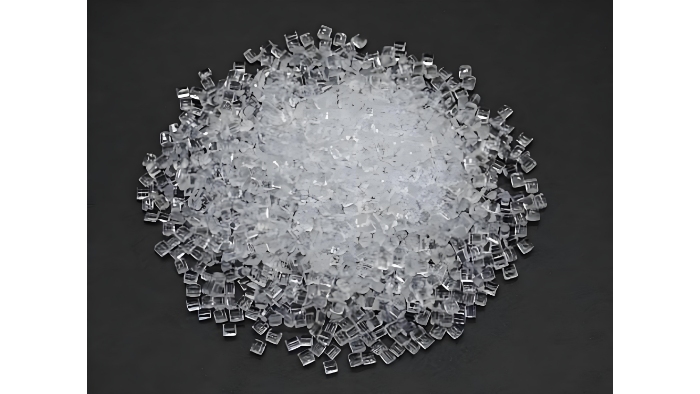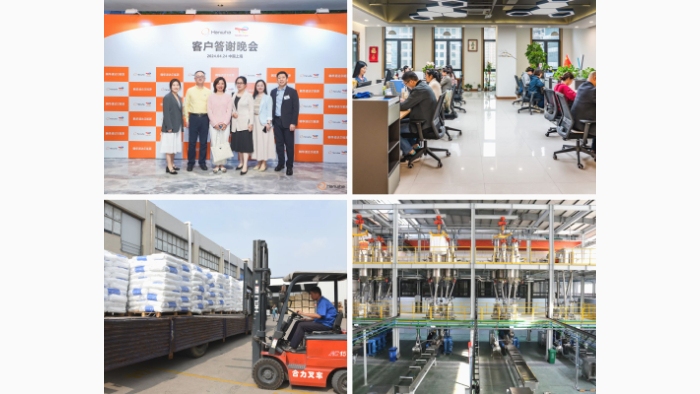Transparent engineering plastics generally refer to a type of engineering plastics that have excellent optical transparency, low yellowness index and haze, can be processed by molding, injection, extrusion, 3D printing and other molding processes, and are mainly used in the manufacturing of optical components.
Transparent engineering plastics mainly include polyolefins, such as cyclic olefin polymers (COC or COP), etc.; polyesters, such as polymethyl methacrylate (PMMA), polyethylene terephthalate (PET), poly(para) Butylene phthalate (PBT), polyethylene naphthalate (PEN), polycarbonate (PC), etc.; polysulfones, such as polyarylsulfone (PSF), polyethersulfone (PES), etc.; poly Amides (PA), such as transparent nylon, etc.; transparent fluoroplastics, such as poly(vinylidene fluoride-hexafluoropropylene) (PVDF-HFP) copolymer, etc., and transparent polyimide (PI), etc.
In practical applications, transparent engineering plastics can be used alone as engineering plastics in the manufacture of optical components, or as the matrix of transparent composite materials in optical engineering.
In traditional application fields, transparent engineering plastics can be used as lenses in the manufacturing of optical components such as glasses and lenses; as transparent components (car lights, portholes, interiors, etc.) ) is used in the construction field, and as a transparent consumable in additive manufacturing (3D printing) and other fields.
In emerging fields, transparent engineering plastics can be used in light-emitting diode (LED) lighting, transparent substrates for photocatalytic wastewater degradation devices, and optical components of flexible electronics, flexible solar cells, flexible sensors and other devices. Therefore, the research and development of transparent engineering plastics has received widespread attention in recent years.

Main factors affecting the transparency of engineering plastics
"Transparency" is a very valuable feature for most engineering plastics, especially optical engineering plastic end products. Amorphous engineering plastics often have good optical transparency. However, for highly crystalline materials, especially products with higher thickness, such as injection molded parts, crystallization often causes the refraction of light, thus deteriorating the transparency of the product.
In order to make crystalline engineering plastics transparent, the generally adopted method is to make the unit cell size smaller. Smaller crystals avoid causing refraction of light. In addition, the light transmittance of some semi-crystalline engineering plastics can also be improved through additive technology.
For PET, unless special additives are added to promote crystallization, PET itself is also a slow-crystallizing material. Amorphous PET is transparent and hard, but softens at the glass transition temperature (Tg) (~80°C).
However, if the material is heated to 120-130°C, it often starts to become cloudy due to the formation of crystals. For another example, for polyamide (nylon) materials, amorphous nylon is truly transparent and will not crystallize under normal molding conditions. However, semi-crystalline nylon 6 engineering plastics often require a rapid cooling rate to achieve transparency. and thin wall design.
If the thickness of the part exceeds 1 to 1.5 mm or if the mold temperature is high when cooling, these materials will begin to develop haze associated with crystal formation.
Generally speaking, for pure engineering plastics, the main factor affecting its optical transparency is the crystallization characteristics of the polymer body. For polymer/polymer blend materials, phase separation and refractive index differences caused by polarity mismatch between components are the main reasons that affect their optical transparency.
For polymer/inorganic composite engineering plastics, light scattering caused by the mismatch in refractive index between the polymer matrix and the inorganic reinforcement material is the main factor affecting its optical transparency. In short, the transparency of engineering plastics is closely related to the properties of the polymer material itself and the molding and processing conditions.
(1)Ontological properties
In terms of bulk properties, as mentioned above, for polymer materials, although there is no absolute correspondence between their crystallinity and their optical transparency, generally speaking, transparent polymer materials mostly have molecular aggregation characteristics. Amorphous.The crystallization characteristics of polymer materials are essentially heterogeneous. The crystalline region within the structure itself is composed of relatively complete unit cell units, but there are also amorphous shapes caused by branching, atactic structure, and other defects. area.
The anisotropic structural characteristics of this crystalline state cause refractive index fluctuations in three situations within crystalline polymer materials: polymer body/air interface, crystalline/amorphous interface, and crystalline/crystalline interface.
The above-mentioned refractive index fluctuations often cause significant light scattering on the surface of crystalline polymer materials, thereby affecting the transparency of crystalline polymer materials.
In addition, for polymer materials with aromatic conjugated units, if there is a relatively strong intramolecular or intermolecular charge transfer (CT) interaction in the internal structure, it is easy for electron donors and electron acceptors to A "Charge Transfer Complex (CTC)" is formed.
During this process, visible light will be significantly absorbed due to charge transition and transfer, thus causing the color and transmittance of the polymer material to deteriorate.
(2)Processing parameters
In terms of molding processing, as mentioned above, for engineering plastics with low crystallinity or slow crystallization rate, rapid cooling (similar to "quenching" in the processing of metal materials) can produce more and more complex materials inside the material. Fine defects and more crystalline aggregates are beneficial to maintaining good transparency of the material.
However, the molding process conditions are limited by the crystallization characteristics of the material and the level of Tg. For example, for highly crystalline polymer materials with fast crystallization rates and low Tg, the cooling rate is limited by factors such as the heat transfer rate and the release of crystallization heat, so it has less impact on the crystallization characteristics of the final material.In addition, rapid cooling may produce undesirable stresses in engineering plastic products.
In addition, defects such as holes on the surface or inside the engineering plastic during the molding, extrusion, and injection molding processes will also affect the optical transparency of the material. Hole defects inside polymer materials may become light scattering centers.
Although the size of these hole defects is small and has little impact on the transparency of polymer materials under normal conditions, when crystalline polymer materials are stretched and oriented by external forces, these holes often cause the material to "whiten" and a key factor in the sharp decline in transparency.
To sum up, the factors that affect the transparency of engineering plastics come from the dual effects of bulk materials and processing parameters. To design and develop high-performance transparent engineering plastics, it is necessary to give full play to the favorable factors while minimizing the impact of unfavorable factors.
QINGDAO PRIME TRADE CO., LTD is a company with more than 20 years of experience that specializes in distributing international brand engineering plastic particles. It mainly represents: CHIMEI ABS/PC/PMMA, HANWHA TOTAL PP, SABIC PPO/PC special materials. We also have our own modification processing factory, Qingdao Primetech Plastic Co., Ltd., with a professional technical team to provide you with fast and professional services to meet the needs of customers at different levels.


 English
English














